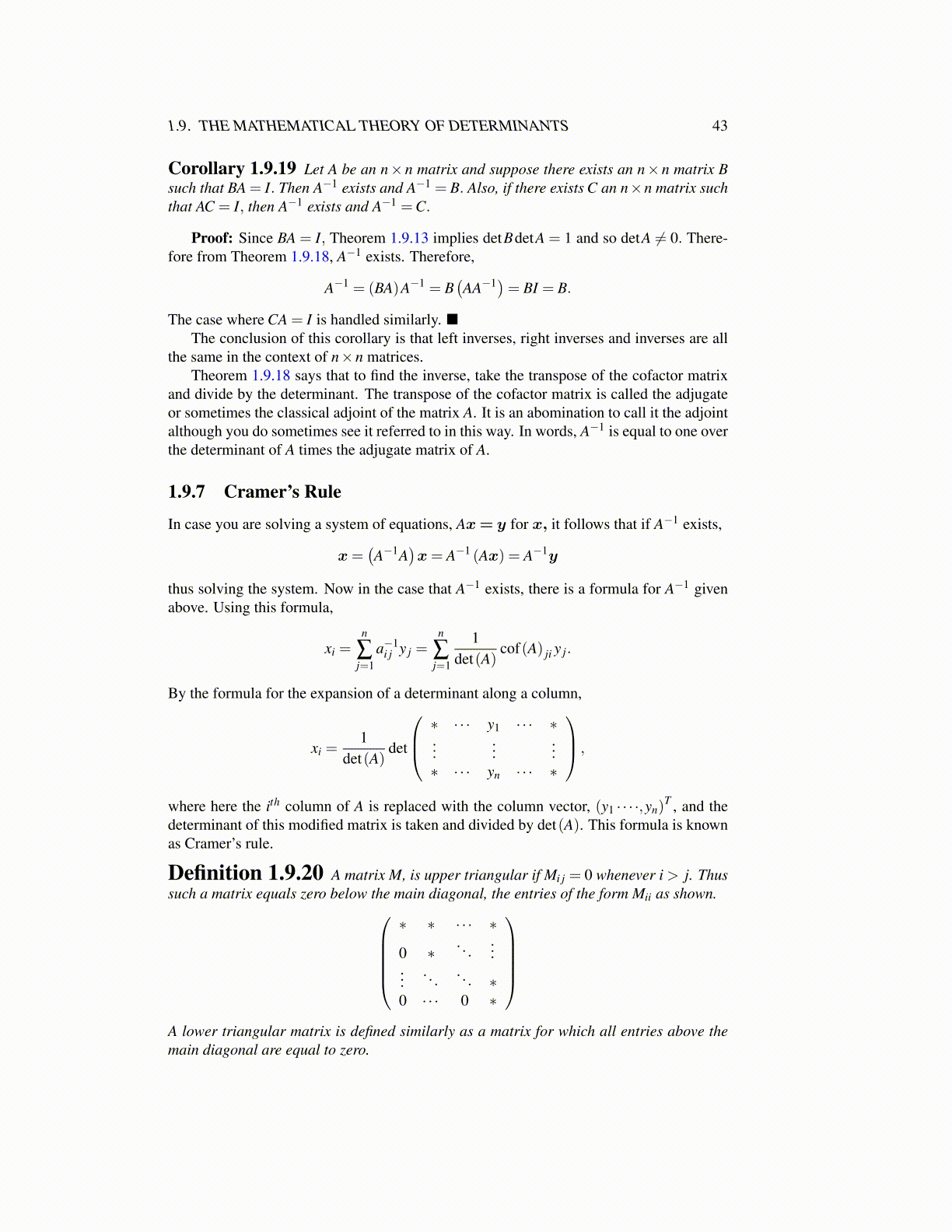
1.9. THE MATHEMATICAL THEORY OF DETERMINANTS 43
Corollary 1.9.19 Let A be an n×n matrix and suppose there exists an n×n matrix Bsuch that BA = I. Then A−1 exists and A−1 = B. Also, if there exists C an n×n matrix suchthat AC = I, then A−1 exists and A−1 =C.
Proof: Since BA = I, Theorem 1.9.13 implies detBdetA = 1 and so detA ̸= 0. There-fore from Theorem 1.9.18, A−1 exists. Therefore,
A−1 = (BA)A−1 = B(AA−1)= BI = B.
The case where CA = I is handled similarly. ■The conclusion of this corollary is that left inverses, right inverses and inverses are all
the same in the context of n×n matrices.Theorem 1.9.18 says that to find the inverse, take the transpose of the cofactor matrix
and divide by the determinant. The transpose of the cofactor matrix is called the adjugateor sometimes the classical adjoint of the matrix A. It is an abomination to call it the adjointalthough you do sometimes see it referred to in this way. In words, A−1 is equal to one overthe determinant of A times the adjugate matrix of A.
1.9.7 Cramer’s Rule
In case you are solving a system of equations, Ax= y for x, it follows that if A−1 exists,
x=(A−1A
)x= A−1 (Ax) = A−1y
thus solving the system. Now in the case that A−1 exists, there is a formula for A−1 givenabove. Using this formula,
xi =n
∑j=1
a−1i j y j =
n
∑j=1
1det(A)
cof(A) ji y j.
By the formula for the expansion of a determinant along a column,
xi =1
det(A)det
∗ · · · y1 · · · ∗...
......
∗ · · · yn · · · ∗
,
where here the ith column of A is replaced with the column vector, (y1 · · · ·,yn)T , and the
determinant of this modified matrix is taken and divided by det(A). This formula is knownas Cramer’s rule.
Definition 1.9.20 A matrix M, is upper triangular if Mi j = 0 whenever i > j. Thussuch a matrix equals zero below the main diagonal, the entries of the form Mii as shown.
∗ ∗ · · · ∗
0 ∗. . .
......
. . .. . . ∗
0 · · · 0 ∗
A lower triangular matrix is defined similarly as a matrix for which all entries above themain diagonal are equal to zero.